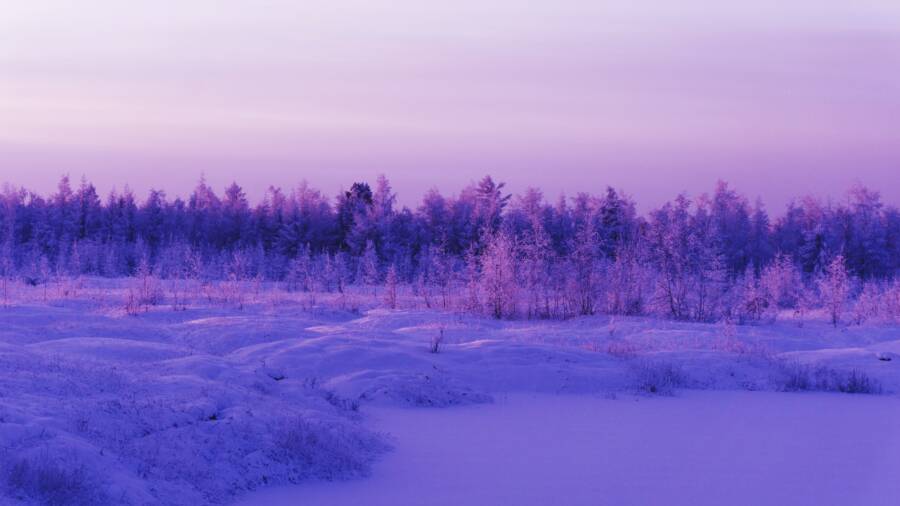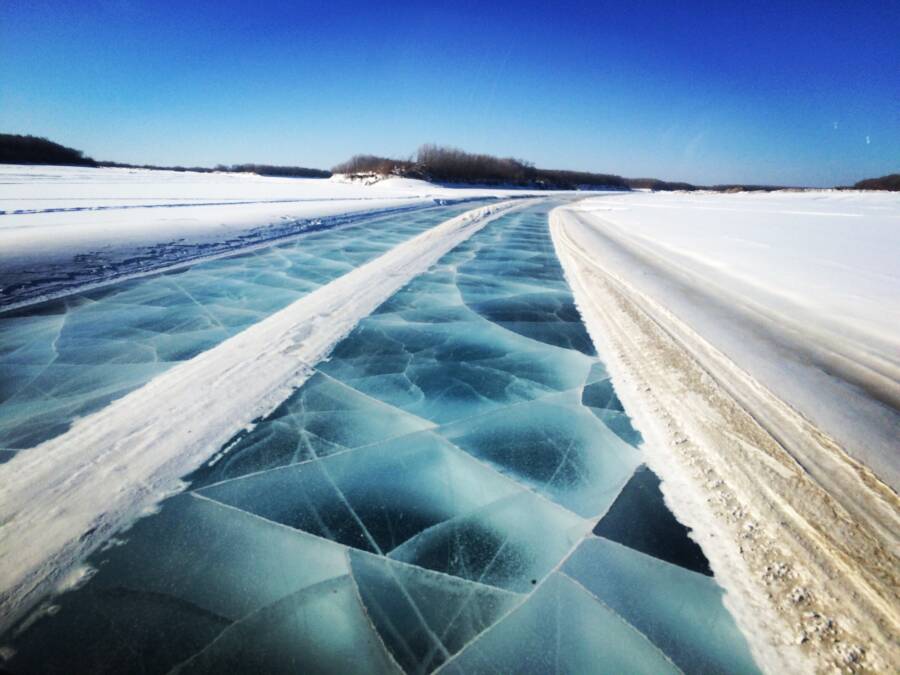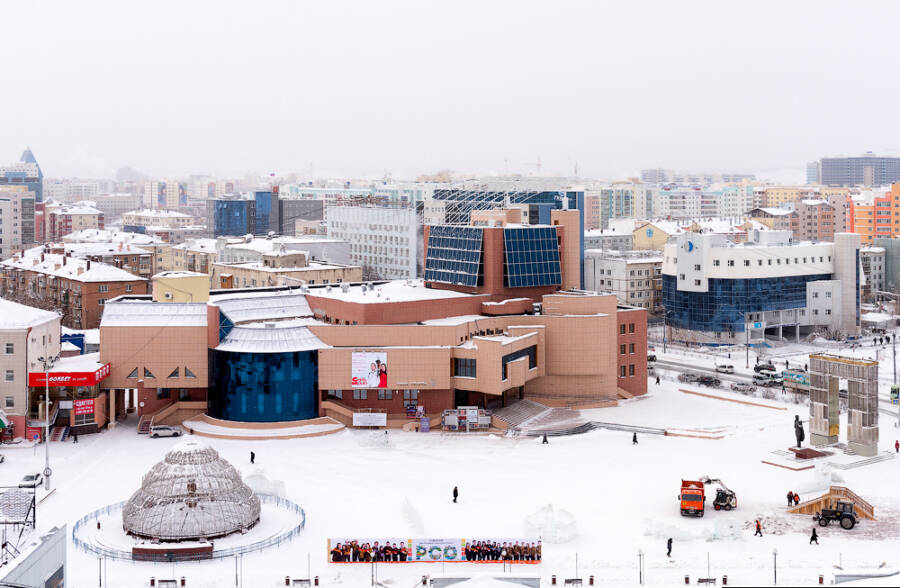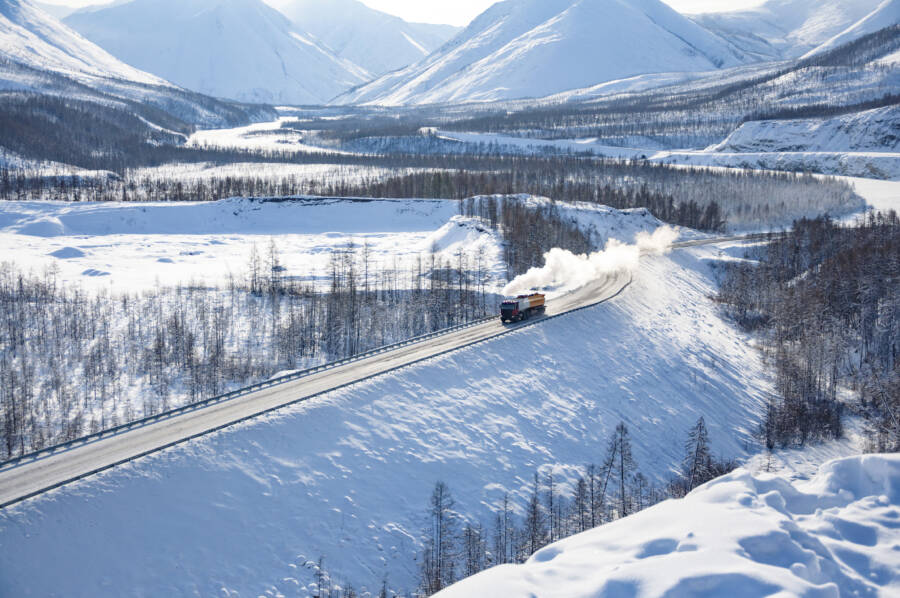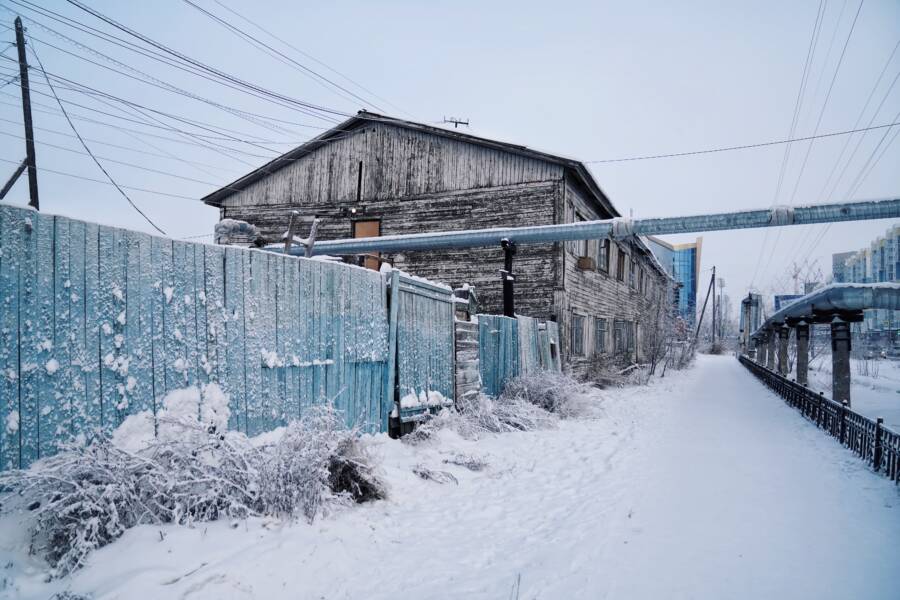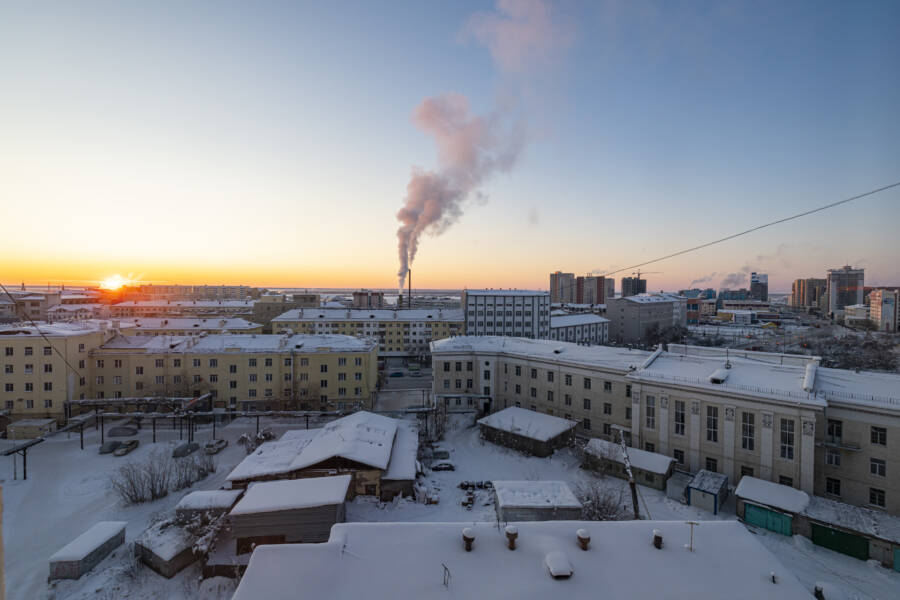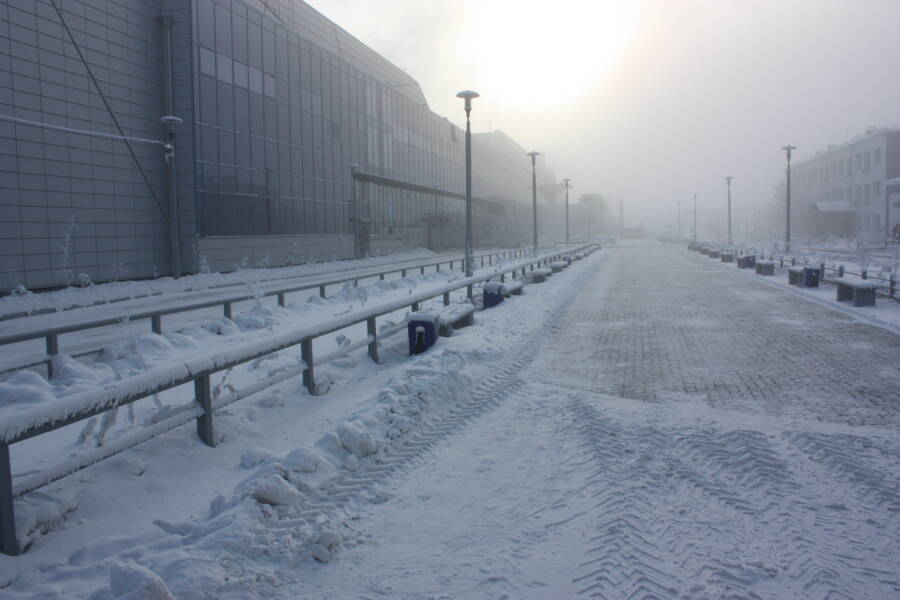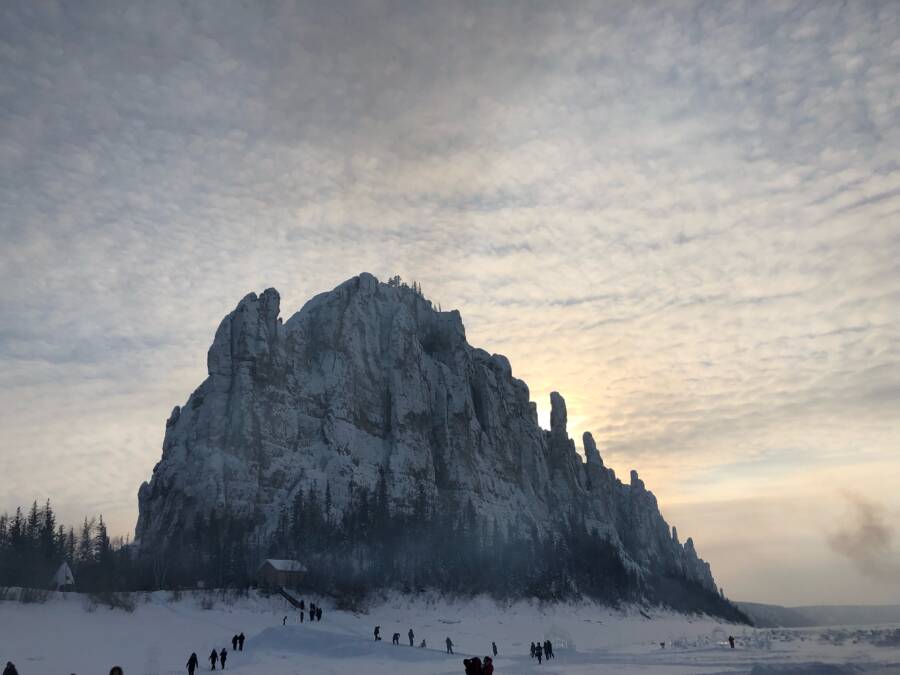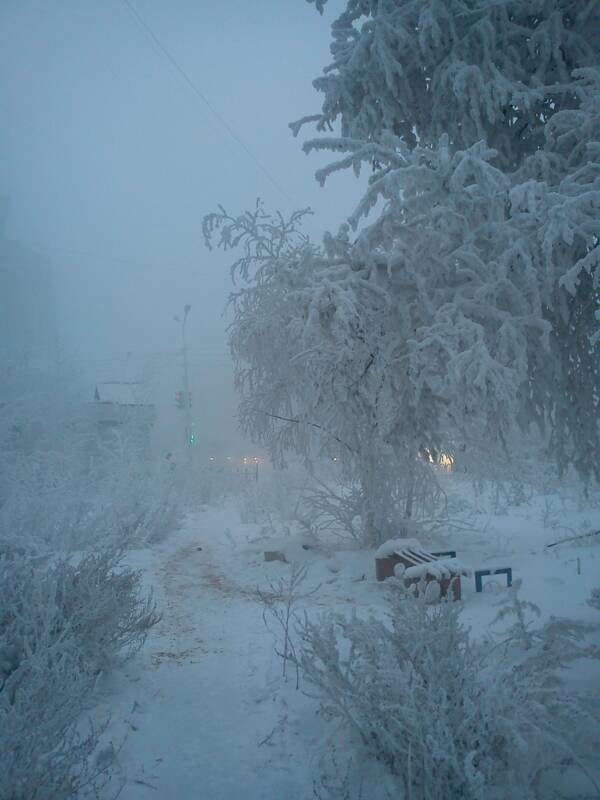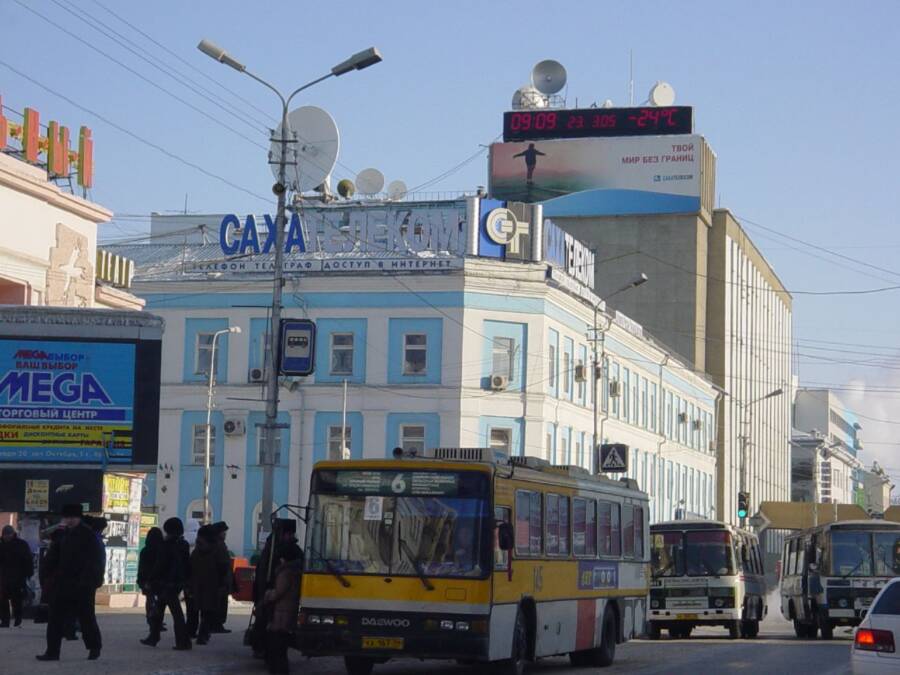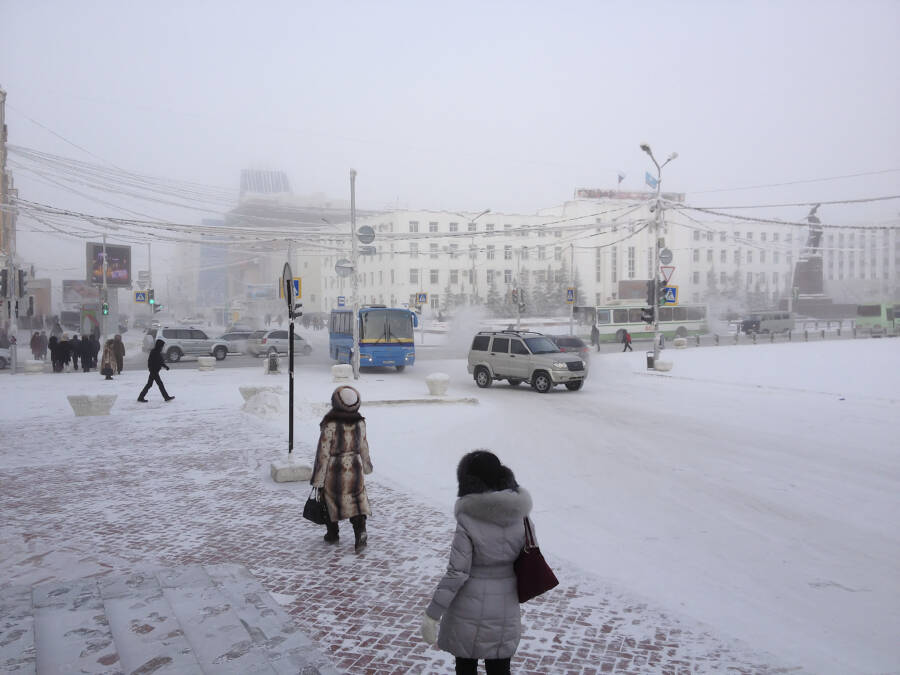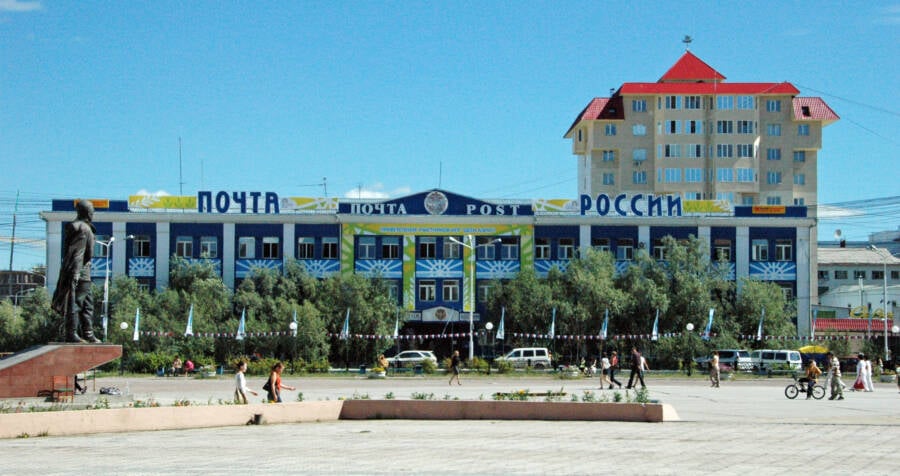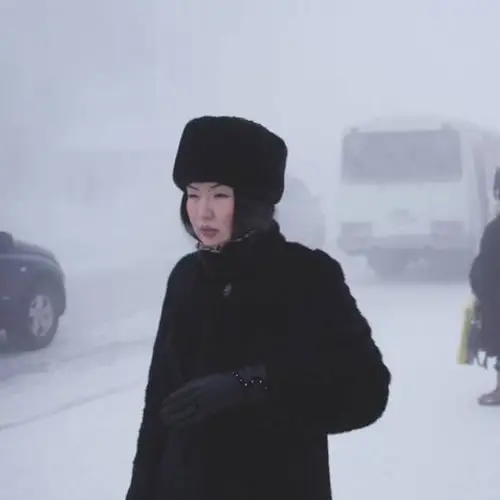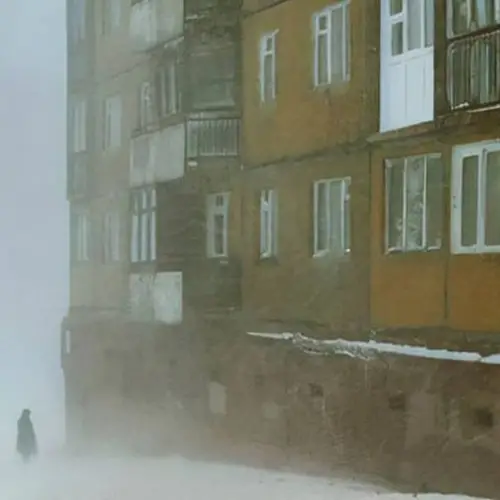A city of over 300,000 people, Yakutsk is just 300 miles south of the Arctic Circle and becomes so cold in the winter that residents don't wear eye glasses outside because they freeze to the skin.
If you're a fan of extreme weather, the icy Siberian city of Yakutsk, Russia, is probably right up your alley. Not only is it the coldest city in the world, with a record winter low of negative 84 degrees Fahrenheit, but its summers are so warm that the region buzzes with mosquitos.
Situated on a remote slab of continuous permafrost, Yakutsk — the regional capital of the Sakha Republic, also known as Yakutia — has a population of 336,274 people and an average annual temperature of just 18 degrees Fahrenheit.
Many of the city's houses and buildings are built on stilts buried deep into the ground, which ventilate their undersides and prevent them from melting the permafrost. Even water and gas lines are often above ground, snaking around the city.
The good news is, Yakutsk has much more to offer than its unique climate. The city's vibrant film industry, many theaters, festivals, and thriving punk scene keep the locals busy.
What It's Like To Live In Yakutsk, Russia
Today, Yakutsk is known as the administrative, political, cultural, and scientific center for the entire Russian Far East Federal Region.

Wikimedia CommonsA panoramic shot of Yakutsk at dusk.
But it didn't start that way. Founded by Cossack explorer Pyotr Beketov in 1632, Yakutsk and its surrounding region served as a place of exile for Russian revolutionaries in the mid-17th century. Due to its severe climate, the government of the Russian Empire considered the area to be "a prison without bars."
The economic turning point for Yakutsk occurred during a period of industrial development in the region in the 19th and 20th centuries. Currently, the largest part of Yakutsk's economy, by far, comes from regional mining. Coal mining is common, but diamond mines are far more profitable. And within the Sakha Republic, companies produce 26 percent of the world's raw diamonds.
Gold is another hot commodity in the region, where mining operations are so large that they can be seen from space.
Before the region's gold and other minerals were discovered in the 1880s, locals relied on dealing furs and other goods, transporting them on the Lena River, which hugs the eastern side of Yakutsk.
Despite the plentiful natural resources, many living on the outskirts of the city deal with great poverty. Some don't even have enough resources to live in shelters much better than they provide for their farm animals. The average monthly wage of Yakutsk is the equivalent of about $600 per month.
At least banks are willing to grant loans for long fur coats, which can each cost more than multiple months' income. The residents of Yakutsk know that in the winter, you don't go outside unless you have to. But when you do, you have to dress for survival with layers of wool, down, and fur.
As for the typical cuisine, those living in the region rely heavily on dairy products, meat, fish, and foraged items, such as berries. Reindeer meat is popular, and locals often serve a dish called Indigirka, which consists of slightly thawed fish cubes, topped with onion, salt, pepper, and vegetable oil.
The Natural Beauty Of The Coldest City On Earth
In addition to icicles and snow, a shroud of "habitation" fog covers the city when the air is so cold that the warmer air from houses, cars — and even body heat — cannot rise. The fog contributes to the city's otherworldly winter appearance.
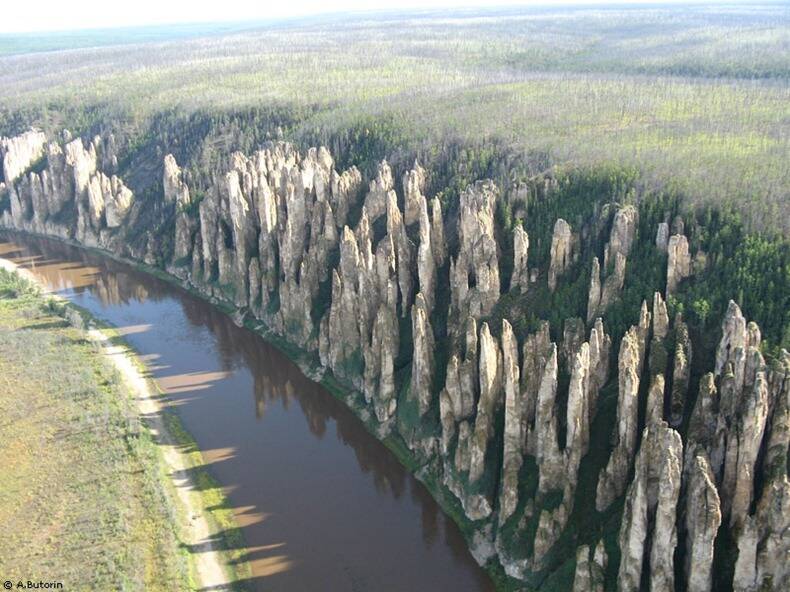
katexic/FlickrLena's Pillars — giant limestone columns — stand tall over the Lena River.
Yakutsk is a major port on the Lena River, one of three rivers that flow into the Arctic Ocean. The Lena Pillars are one of the main tourist attractions. The 650-foot-tall limestone columns look over the river and are part of a 3 million-acre nature park with tundra, taiga, and dunes.
There is no bridge or road anywhere in the Sakha Republic that crosses the Lena River. One of the most remote cities in the world, there's only one road connecting Yakutsk to the rest of the highway system — the Lena Highway. That road is only accessible by ferry in the summertime, or by driving directly over the frozen water in the dead of winter.
And although Yakutsk does host two airports — Yakutsk Airport and Magan Airport — flying to the city during the colder months can, at times, be impossible. With an average winter temperature of negative 40 degrees Fahrenheit, the cold can dip low enough to freeze jet fuel.
However, once in Yakutsk, there is plenty to do. Among other attractions, there's the Museum of Mammoths, which houses whole mammoth carcasses that were buried by avalanches or floods and pulled from the permafrost.
There is also the Permafrost Kingdom, a stunning underground museum with dozens of ice sculptures that never melt. There are statues of local pagan gods, Buddha, Ded Moroz (Russia's Santa Claus), and even an interpretation of Picasso's "Guernica" sculpted in ice.
If you can make it through the eight-month-long winters, there are certain rewards. One traveler remembers of her trip:
"I visited in the summer, and everyone takes advantage of the warm weather and long evenings to promenade in the streets. They pick various wild berries all summer. I drank bright red lingonberry juice at every meal."
After learning about Yakutsk, Russia, the coldest city in the world, read about the nearby village of Oymyakon, the coldest permanently inhabited place on Earth. Then, take a virtual trip to a Swedish hotel that's made entirely of snow and ice.

